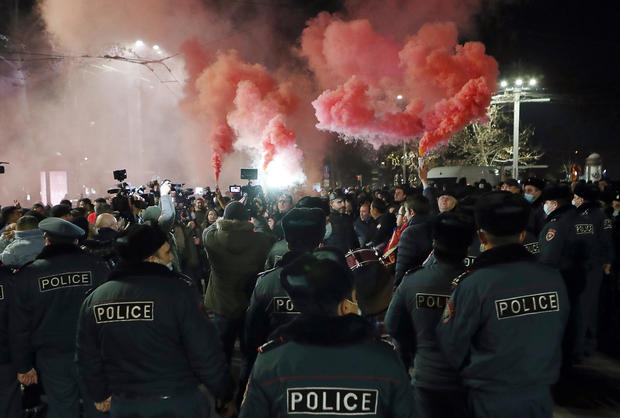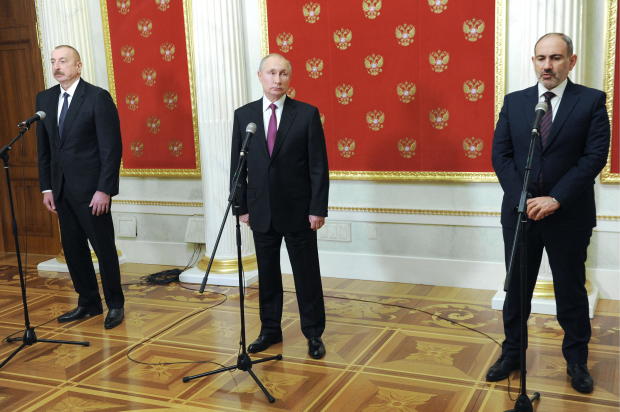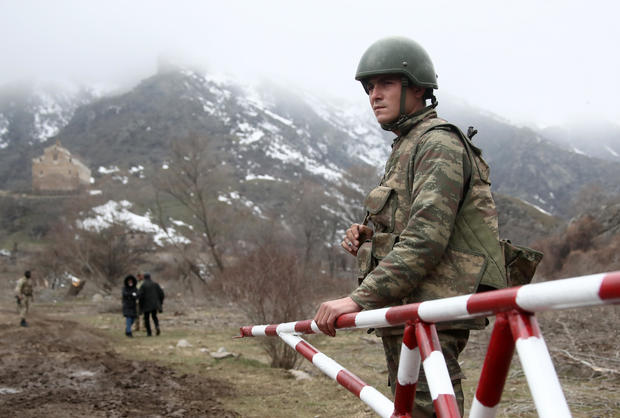The Armenian prime minister said on Thursday that his military had staged an attempted coup against him, as a ceasefire he launched to end a bloody war with neighboring Azerbaijan just a few months ago came back to haunt him . The Armenian military staff demanded that Pashinyan resign after months of protests over the nation’s perception defeat in the Nagorno-Karabakh conflict with Azerbaijan.
The General Staff issued a statement calling on Prime Minister Nikol Pashinyan to resign. It was signed by senior military officers.
Pashinyan called the military’s request an “attempted military coup” and ordered the chief of staff to be fired.
Hayk Baghdasaryan / TASS / Getty
Armenian President Armen Sarkisian, whose role has little power and is symbolic, released a statement on Thursday calling on “state agencies, law enforcement agencies, political forces, all citizens” to show restraint.
“Every poorly considered word or action increases tensions and deepens the crisis,” he said. “Reaffirming the role of the presidency as a balancing act, I am taking urgent steps to defuse tensions and find ways to resolve the situation peacefully,” said Sarkisian, without giving further details.
The protests that have emerged since the brief war with Azerbaijan last fall increased this week after Pashinyan’s order to fire the first deputy chief of staff. There have been more and more requests for him to step down.
The root of the problem
Protests against Pashinyan began in November, after he signed a Russian-mediated ceasefire pact with Azerbaijan, which ceded the territory occupied by Armenian forces. The deal ended a six-week war over the separatist territory of Nagorno-Karabakh, in which thousands died, but even Pashinyan himself admitted it was at least a partial defeat.
The two nations have vied for ownership of the mountainous enclave of Nagorno-Karabakh in the Cáucuses region for decades. It is internationally recognized as part of Azerbaijan, but it is autonomously governed and inhabited mainly by ethnic Armenians.
An earlier ceasefire, reached after a bloody war in the region in the 1990s, was first broken in late September 2020, leading to the worst clashes in decades. The violence left thousands dead on both sides and displaced more than 100,000 people from their homes.
Mikhail Klimentyev / TASS / Getty
The new ceasefire was enacted under an agreement signed by the leaders of Russia, Armenia and Azerbaijan in November, which was published by the Kremlin. The agreement left Azerbaijan in control of parts of Nagorno-Karabakh that were seized by Armenian forces during the autumn fighting. Armenian forces were forced to withdraw from several adjacent areas, but maintained control of the rest of the region.
Azerbaijan President Ilham Aliyev referred to the ceasefire agreement as a “capitulation” to Armenia, praising the agreement and the success of his army.
“For our people, these days are the happiest.” he wrote on Twitter.
In a Facebook post partly titled “my sin”, Pashinyan called his decision to sign the agreement “incredibly painful”.
“I made this decision as a result of an in-depth analysis of the military situation and the assessment of people who know the situation best,” said Pashinyan’s statement. “Also based on the belief that this is the best possible solution for the current situation.”
Valery Sharifulin / TASS / Getty



